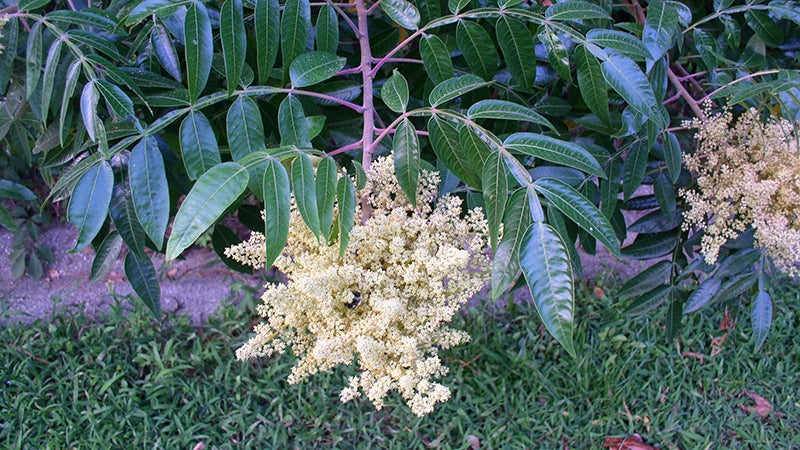Shining Sumac grows fast, usually pest-free
Published 5:34 pm Friday, September 14, 2018

- The shrub grows wild in nearly every county in Virginia, and furnishes winter food for many upland gamebirds, songbirds and large and small mammals.
|
Getting your Trinity Audio player ready...
|
Shining Sumac
Rhus copallina
Glossy, dark-green compound leaves suggest the common name of this desirable landscape plant, often planted for its shiny leaves which turn scarlet in the fall. The leaves are 8-12 inches long with 9-21 leaflets, carrying wings on either side of the midrib.
In summer, Shining Sumac is topped with striking white 4 to 6-inch flower pyramids, which produce clouds of dark red fruit. The shrub is large and spreading and not suited to small areas. However, it is very useful for new homes where the developer has denuded the property; the leaves are acid and help rebuild soil that has been stripped of its organic matter. In an established landscape, it could be planted on the edge of a lawn or driveway to attract birds. This plant is fast growing, generally pest- and disease-free and drought-tolerant.
Shining Sumac grows in open, dry places from southern Maine to Florida and west to Indiana, southeast Nebraska and Texas. The shrub grows wild in nearly every county in Virginia, and furnishes winter food for many upland game birds, songbirds and large and small mammals. Wildlife eat the fruit, and deer also browse the twigs.
The sour fruit can be nibbled or made into a drink like lemonade, and American Indians used parts of the plant for some medicinal purposes.
HELEN HAMILTON is past president of the John Clayton Chapter, Virginia Native Plant Society. Contact her at helen48@cox.net. For more information about native plants, visit www.vnps.org.



